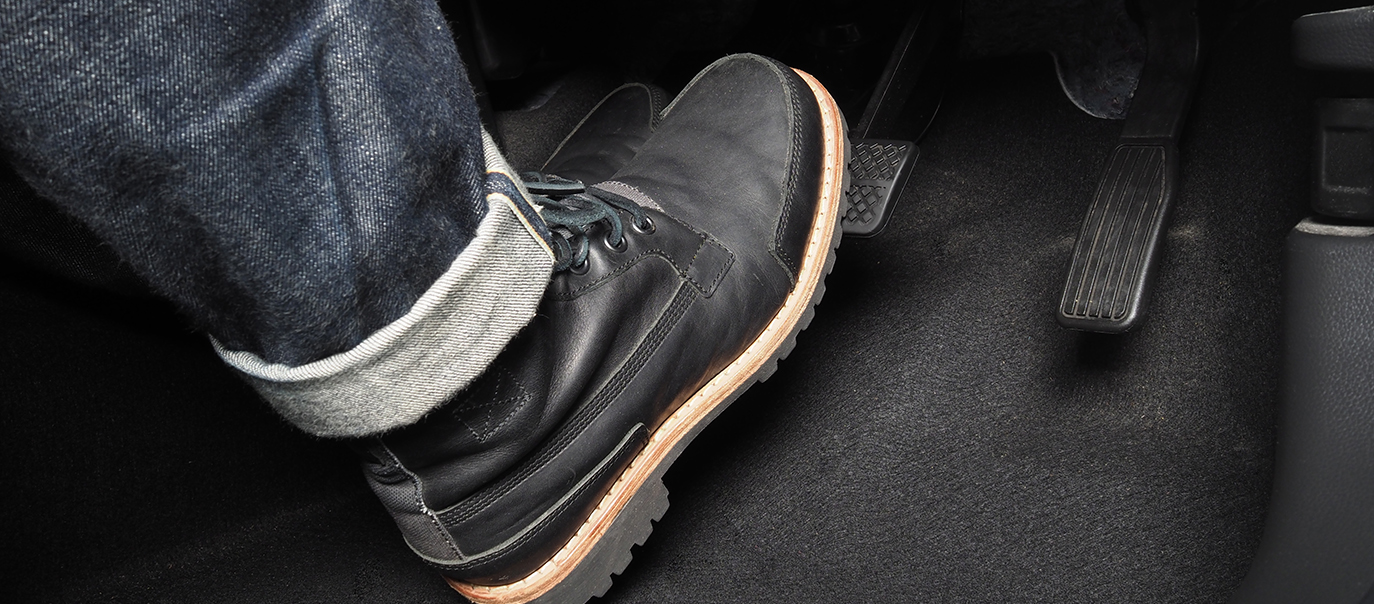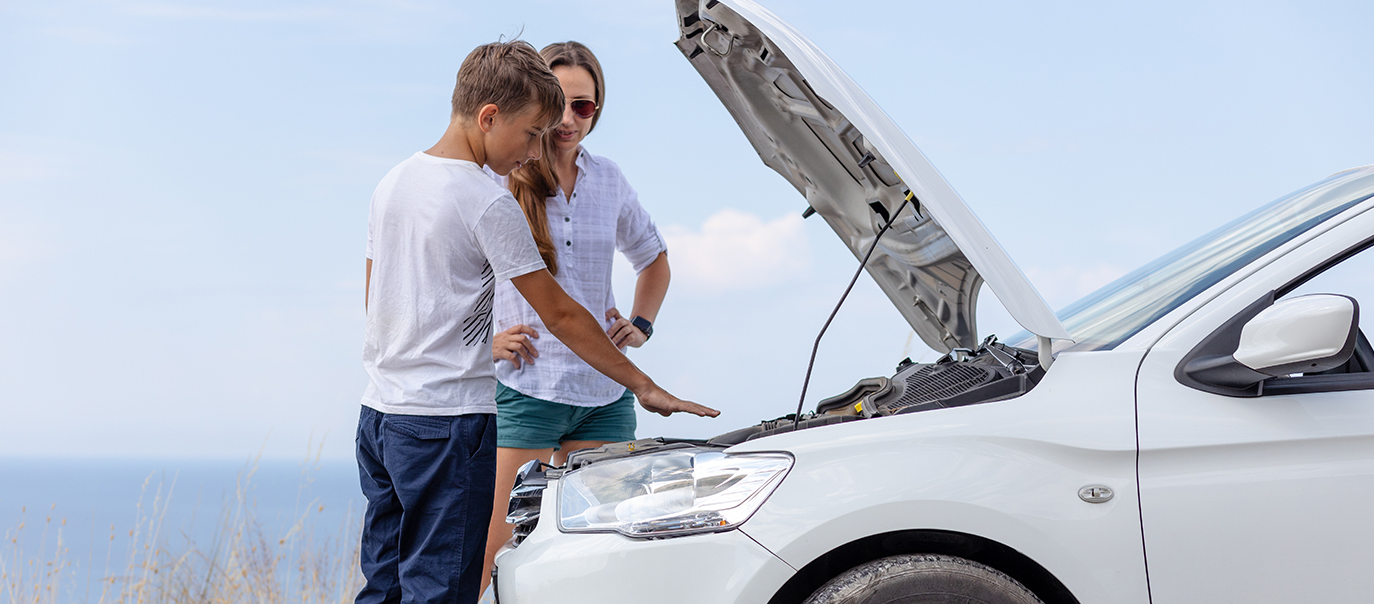Introduction
How well these are done at the beginning of the test sets the tone for the test. The questions given here are the ones used on your driving test.
Structure
They divide up into four sections:
- External
- Internal
- Under the bonnet
- On the move
There will be one Tell Me question asked at the beginning of the test and one Show Me question which will be done on the move.

Tell Me: External and Internal
The external checks should be done visually every time you approach your vehicle and in more depth once a week. You are looking at your vehicle as you approach:
- Start from the bottom and work your way up
- Are there any unexplained puddles under the vehicle (has it been raining?)
- Are the tyres okay, a quick look will tell you if it has deflated overnight
- Are all the lights intact
- Side mirrors are out and still attached
- Windows and windscreens are clean and clear
- The value of a microfiber cloth here will be worth its weight in gold
The once a week checks will be a closer look at the tyres and a check of the tyre pressure. Get into the vehicle and adjust the seat if necessary and this includes the head restraint.
Turn all your lights on and have a walk around the car to make sure everything is working. Turn the ignition on and check the warning lights particularly the ABS light.
Put one hand on the steering wheel and pull down maintaining some pressure and squeeze the foot brake also maintaining pressure. As you start the vehicle the steering should go soft and the foot brake should go soft then become firm. This is a check that the servo assists are working and can be done every time you start the car.

1. Tell me how you’d check that the brakes are working before starting a journey.
Brakes should not feel spongy or slack. Brakes should be tested as you set off. Vehicle should not pull to one side.
2. Tell me where you’d find the information for the recommended tyre pressures for this car and how tyre pressures should be checked.
Manufacturer’s guide, use a reliable pressure gauge, check and adjust pressures when tyres are cold, don’t forget spare tyre, remember to refit valve caps.
3. Tell me how you make sure your head restraint is correctly adjusted so it provides the best protection in the event of a crash?
The head restraint should be adjusted so the rigid part of the head restraint is at least as high as the eye or top of the ears, and as close to the back of the head as is comfortable. Note: Some restraints might not be adjustable.
4. Tell me how you’d check the tyres to ensure that they have sufficient tread depth and that their general condition is safe to use on the road?
No cuts and bulges, 1.6mm of tread depth across the central three-quarters of the breadth of the tyre, and around the entire outer circumference of the tyre. Look for wear bars on the tyre and take the opportunity to check the general condition of the tyre. Note the wear bars on the tyre under the man’s fingers.
5. Tell me how you’d check that the headlights and tail lights are working? You don’t need to exit the vehicle.
Explain you’d operate the switch (turn on ignition if necessary), then walk round vehicle (as this is a ‘tell me’ question, you don’t need to physically check the lights).
6. Tell me how you’d know if there was a problem with your anti-lock braking system?
Warning light should illuminate if there is a fault with the anti-lock braking system. Watch for the light going out.
7. Tell me how you’d know if there was a problem with your anti-lock braking system?
Explain you’d operate the switch (turn on ignition if necessary), and then walk round vehicle (as this is a ‘tell me’ question, you don’t need to physically check the lights).
8. Tell me how you’d check the brake lights are working on this car?
Explain you’d operate the brake pedal, make use of reflections in windows or doors, or ask someone to help.
9. Tell me how you’d check the power-assisted steering is working before starting a journey?
If the steering becomes heavy, the system may not be working properly. Before starting a journey, 2 simple checks can be made.
Gentle pressure on the steering wheel, maintained while the engine is started, should result in a slight but noticeable movement as the system begins to operate. Alternatively turning the steering wheel just after moving off will give an immediate indication that the power assistance is functioning.
10. Tell me how you’d switch on the rear fog light(s) and explain when you’d use it/them? You don’t need to exit the vehicle
Operate switch (turn on dipped headlights and ignition if necessary). Check warning light is on. Explain use which is when visibility is less than 100 meters.
11. Tell me how you switch your headlight from dipped to main beam and explain how you’d know the main beam is on?
Operate switch (with ignition or engine on if necessary), check with main beam warning light.

Tell Me: Under Bonnet Checks
Make sure your pupil can fluently open the bonnet and is aware of where the fluid reservoirs are and which one is which. In practice these checks should be done about once a week and before any long journey.
Point out:
- That if in a clear plastic container this is for a visual check
- Washer wiper reservoir should also be checked
- Regular checks will mean that your pupil will see when something is out of place
- This means that wires and hoses are all where they were last time it was checked
- There is no splashing of oil or other fluids on the inside of the bonnet
Link the fluid levels under the bonnet to the warning lights and gauge on the dashboard. Explain what to do if or when the warning lights come on while driving.
12. Open the bonnet and tell me how you’d check that the engine has sufficient oil.
Identify dipstick/oil level indicator, describe check of oil level against the minimum and maximum markers. This should be done on a flat and level surface for a true reading.
13. Open the bonnet and tell me how you’d check that the engine has sufficient engine coolant.
Identify high and low level markings on header tank where fitted or radiator filler cap, and describe how to top up to correct level. Explain this should be done when the engine is cool or cold.
14. Open the bonnet and tell me how you’d check that you have a safe level of hydraulic brake fluid.
Identify the reservoir, check level against high and low markings.

‘Show Me’ Questions
These are done on the move and demonstrate that your pupil can safely operate the controls while driving.
Apart from the horn they are all about being able to keep your windows clear. Make sure that your pupil knows where the controls are and how to use them. This should be done while stationary and then practised somewhere quiet.
These questions make the point of the value of clean windows. Follow this link for more information on how to clean windows.
- When it’s safe to do so, can you show me how you wash and clean the rear windscreen?
- When it’s safe to do so, can you show me how you wash and clean the front windscreen?
- When it’s safe to do so, can you show me how you’d switch on your dipped headlights?
- When it’s safe to do so, can you show me how you’d set the rear demister?
- When it’s safe to do so, can you show me how you’d operate the horn?
- When it’s safe to do so, can you show me how you’d demist the front windscreen?
- When it’s safe to do so, can you show me how you’d open and close the side window?
Categories
Recent Posts
Get In Touch
Create a free acccount or login
To continue reading this information, you need a free account that can be created in under a minute. Join today or login
Like to be kept informed?
Our free Lite membership delivers newsflashes and weekly roundups directly to your inbox, so you never miss a beat. Or become a Premium member to enjoy the wide-ranging support & benefits we offer.
Report
There was a problem reporting this post.
Block Member?
Please confirm you want to block this member.
You will no longer be able to:
- See blocked member's posts
- Mention this member in posts
Please allow a few minutes for this process to complete.



Share This: